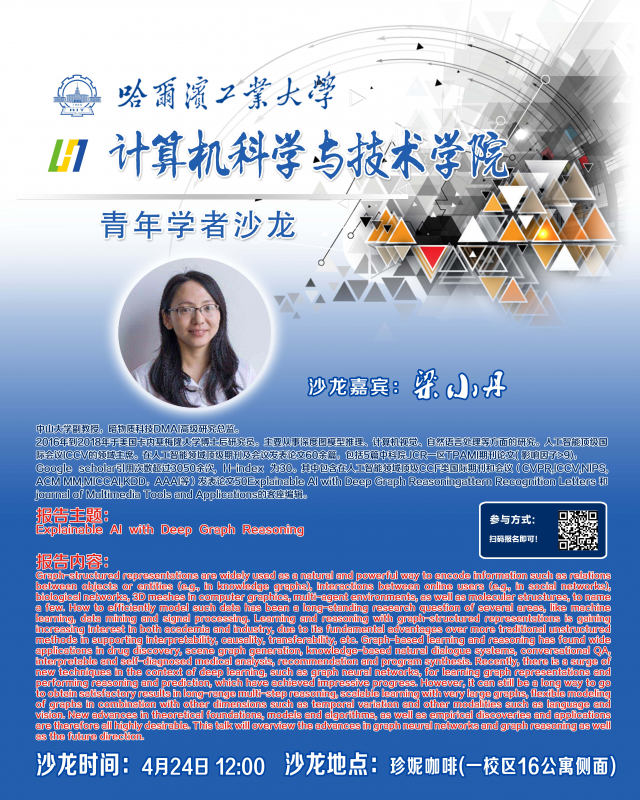沙龙嘉宾:梁小丹,中山大学副教授,暗物质科技dmai高级研究总监。
2016年到2018年于美国卡内基梅隆大学博士后研究员。主要从事深度图模型推理、计算机视觉、自然语言处理等方面的研究。人工智能顶级国际会议iccv的领域主席。在人工智能领域顶级期刊及会议发表论文60余篇,包括5篇中科院jcr一区tpami期刊论文( 影响因子>9),
google scholar引用次数超过3050余次, h-index 为30。其中包含在人工智能领域顶级ccf类国际期刊和会议(cvpr,iccv,nips,acm mm,miccai,kdd,aaai等)发表论文50篇,包括第一作者论文18篇。被邀为国际知名期刊pattern recognition letters 和journal of multimedia tools and applications的客座编辑。
沙龙主题:explainable ai with deep graph reasoning
沙龙内容:graph-structured representations are widely used as a natural and powerful way to encode information such as relations between objects or entities (e.g., in knowledge graphs), interactions between online users (e.g., in social networks), biological networks, 3d meshes in computer graphics, multi-agent environments, as well as molecular structures, to name a few. how to efficiently model such data has been a long-standing research question of several areas, like machine learning, data mining and signal processing. learning and reasoning with graph-structured representations is gaining increasing interest in both academia and industry, due to its fundamental advantages over more traditional unstructured methods in supporting interpretability, causality, transferability, etc. graph-based learning and reasoning has found wide applications in drug discovery, scene graph generation, knowledge-based natural dialogue systems, conversational qa, interpretable and self-diagnosed medical analysis, recommendation and program synthesis. recently, there is a surge of new techniques in the context of deep learning, such as graph neural networks, for learning graph representations and performing reasoning and prediction, which have achieved impressive progress. however, it can still be a long way to go to obtain satisfactory results in long-range multi-step reasoning, scalable learning with very large graphs, flexible modeling of graphs in combination with other dimensions such as temporal variation and other modalities such as language and vision. new advances in theoretical foundations, models and algorithms, as well as empirical discoveries and applications are therefore all highly desirable. this talk will overview the advances in graph neural networks and graph reasoning as well as the future direction.
沙龙时间:4月24日 12:00
沙龙地点:珍妮咖啡(一校区16公寓侧面)


